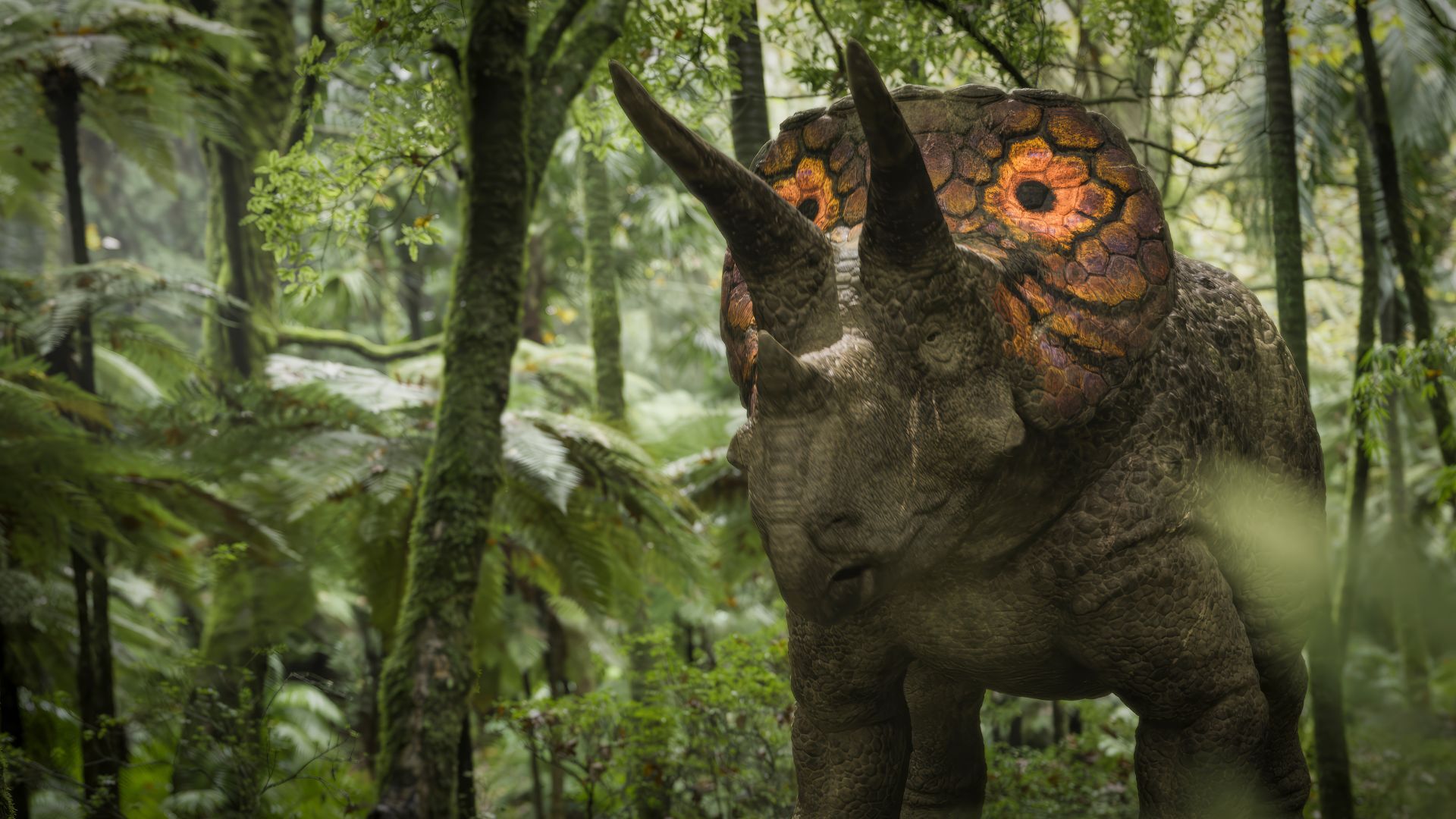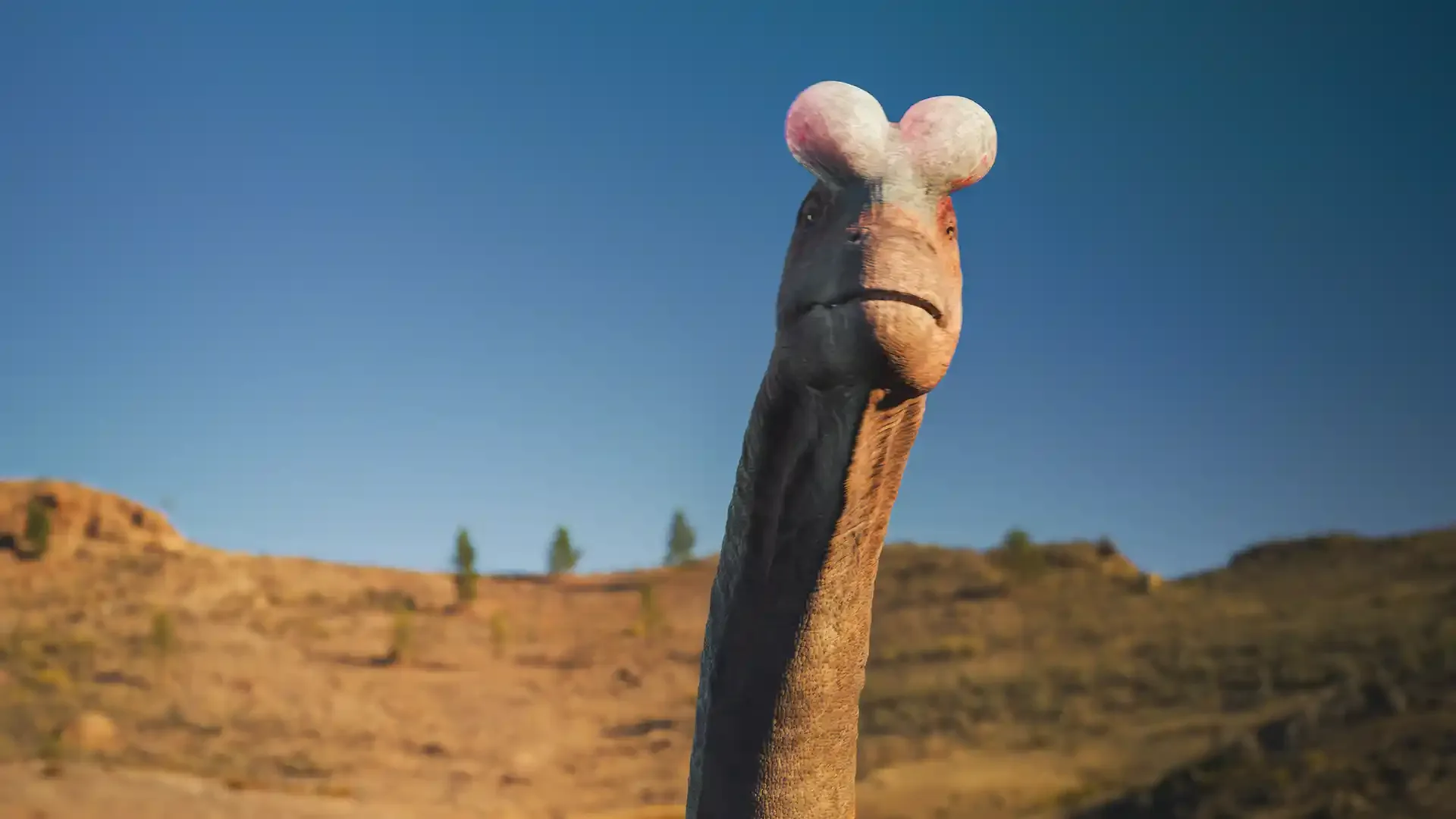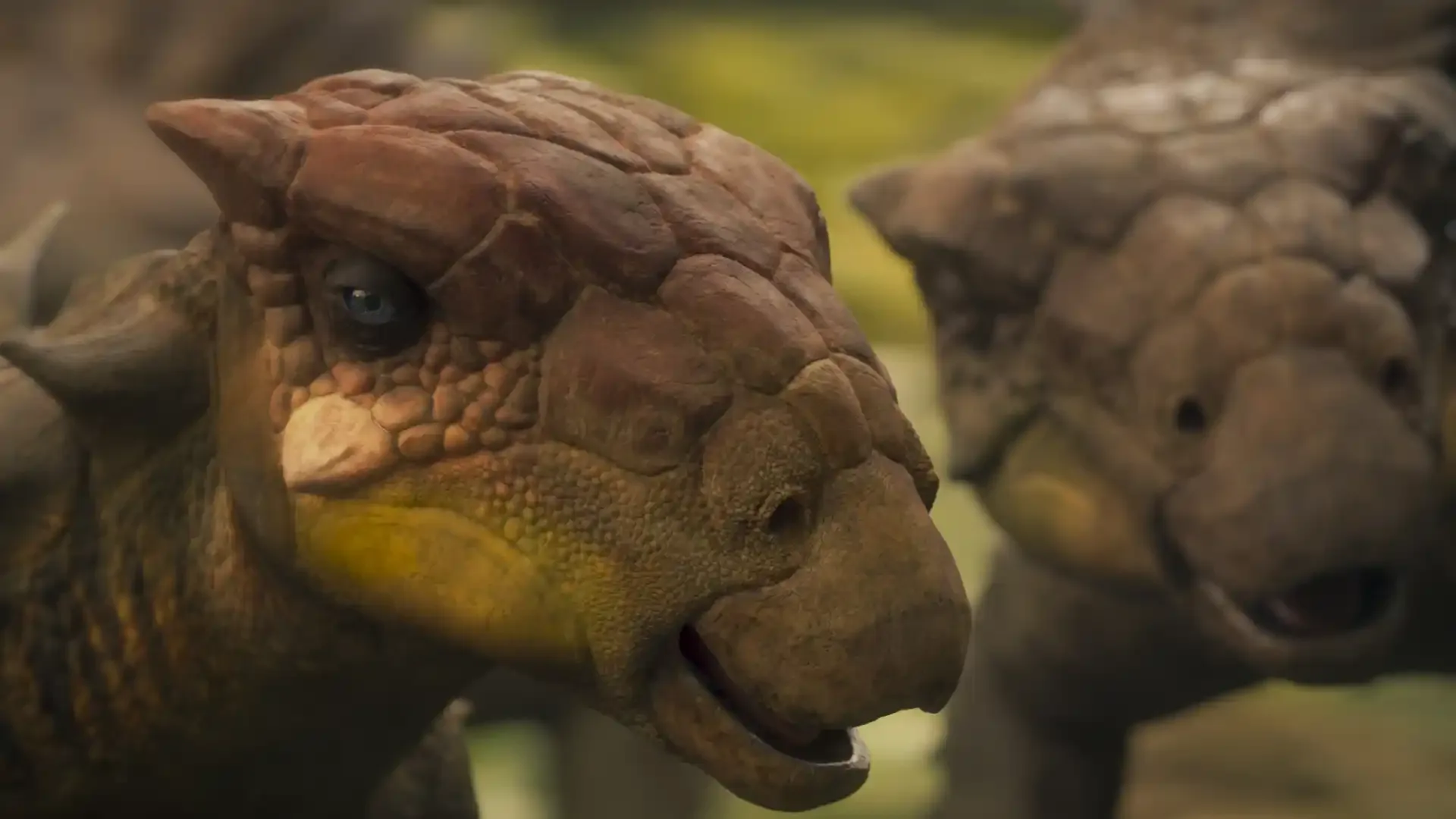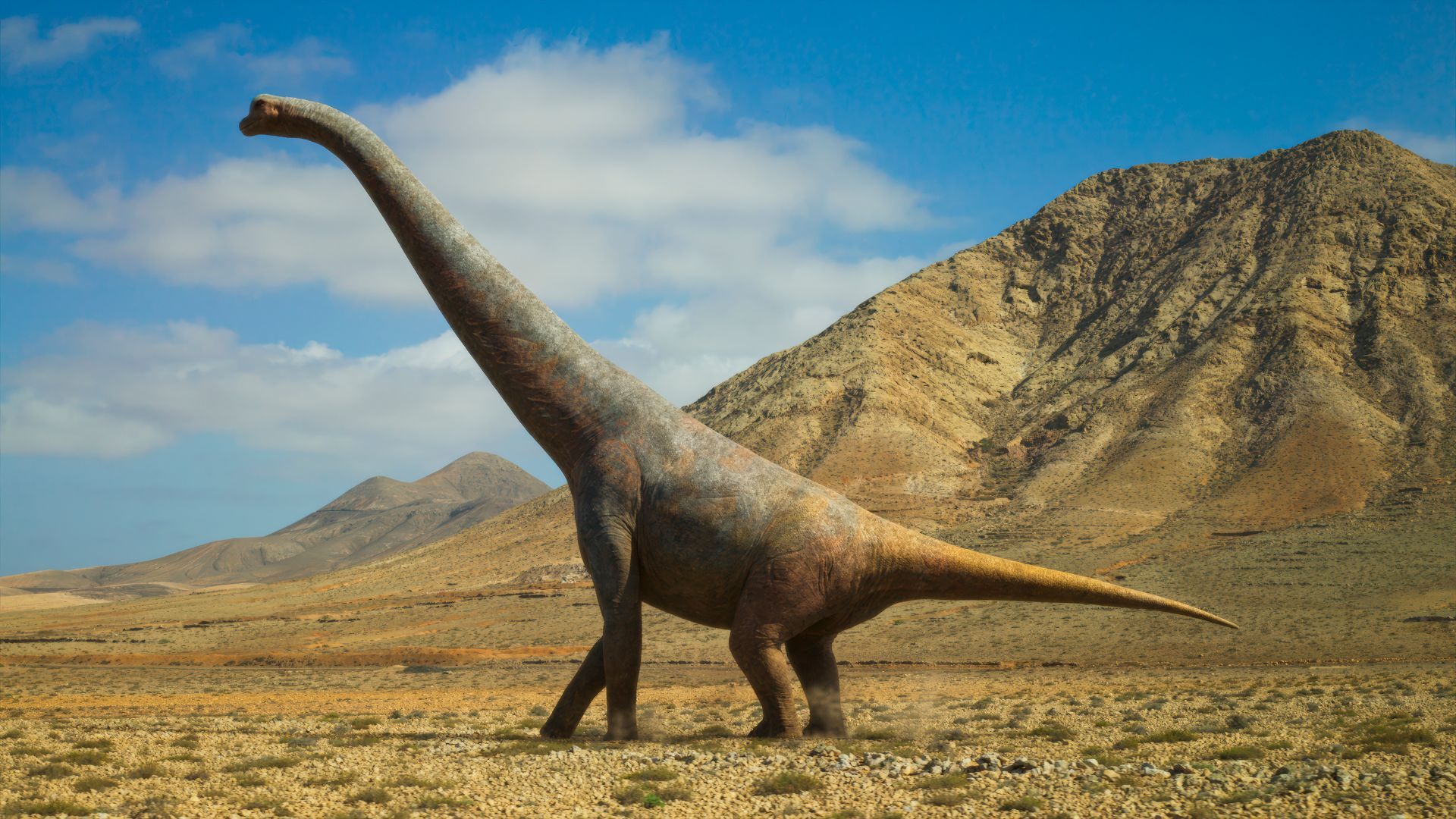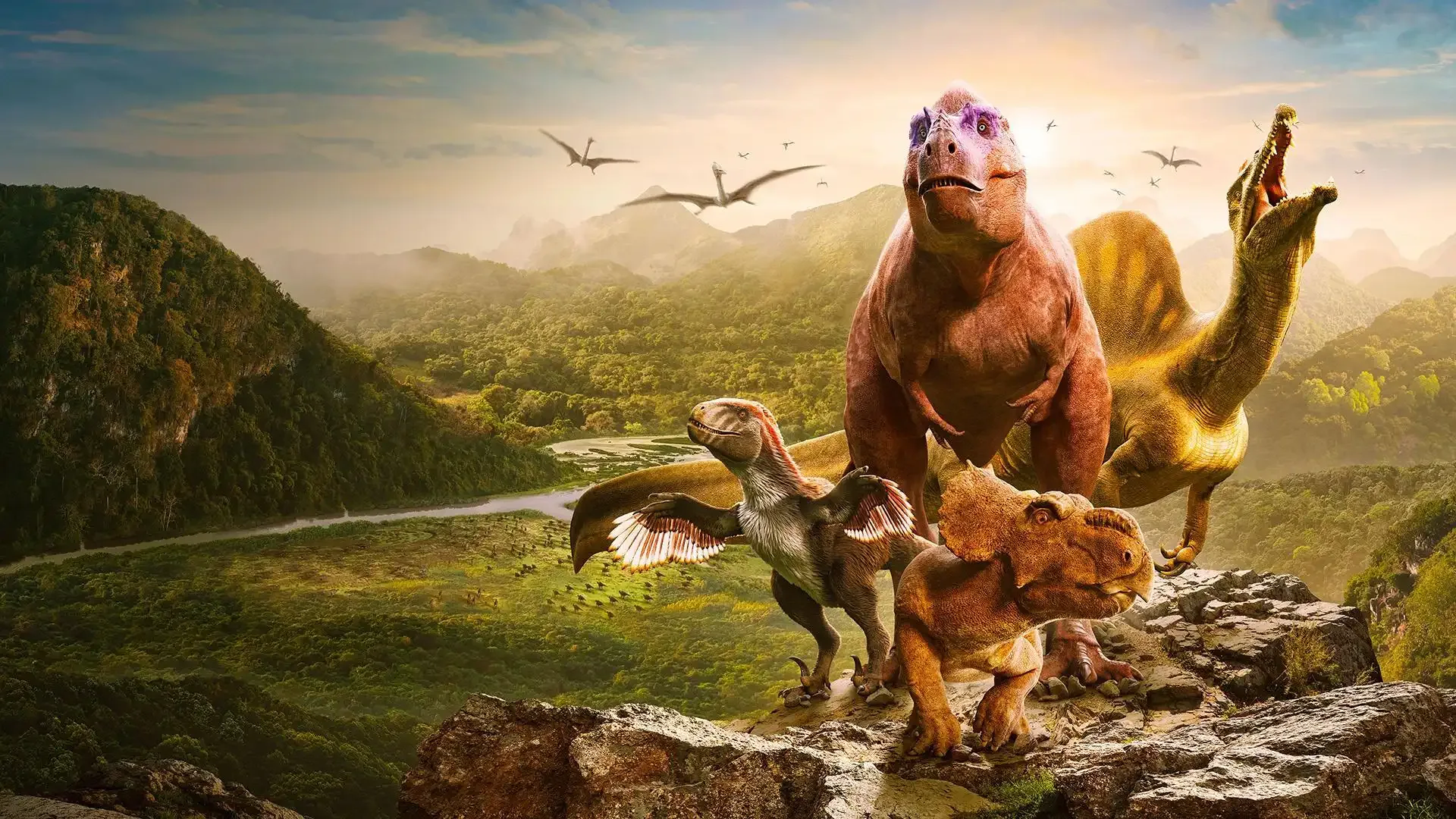After millions of years, six incredible dinosaurs are coming back to life. In “Walking with Dinosaurs” on PBS, paleontologists discover the lives behind the fossils, using the latest scientific methods to uncover stories of survival, triumph, family and even romance. Get the stats on your favorite giants to see how they stack up on this prehistoric stage.
About Pachyrhinosaurus
Imagine a road trip with thousands of your closest friends. That was life for Pachyrhinosaurus, which traveled in enormous family groups to find food and return to ancestral nesting grounds — all while narrowly escaping trouble from their dangerous and hungry neighbors.
- Period: Cretaceous (73 million years ago)
- Location: Northwestern Canada
- Diet: Herbivore
- Behavior: Social; migratory
- Threats: Pterosaur; Gorgosaurus

How Big Was Pachyrhinosaurus?
Pachyrhinosaurus may have lived in massive herds. Given their height and length, that would have been a big family in more ways than one!
Support your local PBS station in our mission to inspire, enrich, and educate.
Highlights
Pachyrhinosaurus was all about family. Scientists estimate that some fossil dig sites contain thousands upon thousands of individuals, illustrating that this massive social circle stayed together until the very end. Unlike some other species, the bones of young and old dinosaurs were buried together, indicating that this was likely a tight-knit, multigenerational family.
Of course, with so many faces, these dinos needed a way to tell each other apart. By studying fossils from different individuals, paleontologists have discovered that every Pachyrhinosaurus had unique horns on their headdress frills, likely used for identification.
But it wasn’t all about love and good vibes. Paleontologists have also discovered that Pachyrhinosaurus had a thick bone slab over its nose. Known as a “boss,” this shield-like structure was designed for battle between bulls. Younger males challenged older rivals for dominance, using their massive weight and protective frills to land bone-shattering blows.
Fortunately, Pachyrhinosaurus was built to survive. Paleontologists have found bone calluses formed over breaks in the fossils, suggesting that these massive dinosaurs could survive severe beatings — not just from their rivals but from predators like the fearsome Gorgosaurus or the flying Pterosaur.
Fun Facts about Pachyrhinosaurus
- There are three known species of Pachyrhinosaurus, all closely related to Triceratops. The one featured in “Walking with Dinosaurs,” Pachyrhinosaurus lakustai, has a unique horn in the middle of its head — sometimes called a “unicorn horn.”
- Experts have found young Pachyrhinosaurus bones of similar ages grouped together, suggesting that the herd migrated to breeding grounds and laid eggs at the same time. This would have meant thousands of dinosaurs moving at once, similar to modern caribou.
- Given the number of fossils, paleontologists estimate that Pachyrhinosaurus was one of the most prominent species of the time.

The best of PBS, straight to your inbox.
Be the first to know about what to watch, exclusive previews, and updates from PBS.
Walking with Dinosaurs
Explore More from Walking with Dinosaurs
